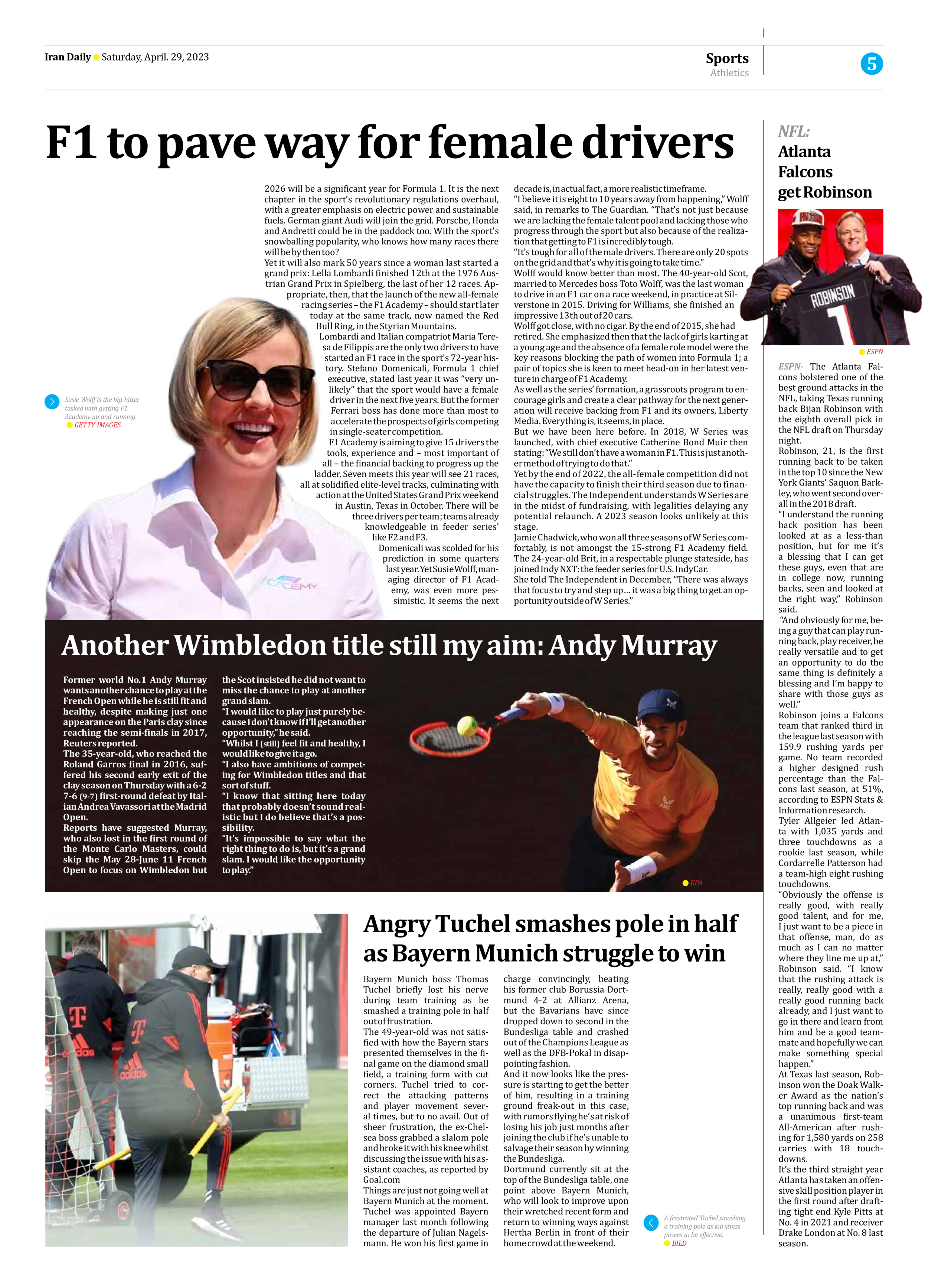
F1 to pave way for female drivers
2026 will be a significant year for Formula 1. It is the next chapter in the sport’s revolutionary regulations overhaul, with a greater emphasis on electric power and sustainable fuels. German giant Audi will join the grid. Porsche, Honda and Andretti could be in the paddock too. With the sport’s snowballing popularity, who knows how many races there will be by then too?
Yet it will also mark 50 years since a woman last started a grand prix: Lella Lombardi finished 12th at the 1976 Austrian Grand Prix in Spielberg, the last of her 12 races. Appropriate, then, that the launch of the new all-female racing series – the F1 Academy – should start later today at the same track, now named the Red Bull Ring, in the Styrian Mountains.
Lombardi and Italian compatriot Maria Teresa de Filippis are the only two drivers to have started an F1 race in the sport’s 72-year history. Stefano Domenicali, Formula 1 chief executive, stated last year it was “very unlikely” that the sport would have a female driver in the next five years. But the former Ferrari boss has done more than most to accelerate the prospects of girls competing in single-seater competition.
F1 Academy is aiming to give 15 drivers the tools, experience and – most important of all – the financial backing to progress up the ladder. Seven meets this year will see 21 races, all at solidified elite-level tracks, culminating with action at the United States Grand Prix weekend in Austin, Texas in October. There will be three drivers per team; teams already knowledgeable in feeder series’ like F2 and F3.
Domenicali was scolded for his prediction in some quarters last year. Yet Susie Wolff, managing director of F1 Academy, was even more pessimistic. It seems the next decade is, in actual fact, a more realistic timeframe.
“I believe it is eight to 10 years away from happening,” Wolff said, in remarks to The Guardian. “That’s not just because we are lacking the female talent pool and lacking those who progress through the sport but also because of the realization that getting to F1 is incredibly tough.
“It’s tough for all of the male drivers. There are only 20 spots on the grid and that’s why it is going to take time.”
Wolff would know better than most. The 40-year-old Scot, married to Mercedes boss Toto Wolff, was the last woman to drive in an F1 car on a race weekend, in practice at Silverstone in 2015. Driving for Williams, she finished an impressive 13th out of 20 cars.
Wolff got close, with no cigar. By the end of 2015, she had retired. She emphasized then that the lack of girls karting at a young age and the absence of a female role model were the key reasons blocking the path of women into Formula 1; a pair of topics she is keen to meet head-on in her latest venture in charge of F1 Academy.
As well as the series’ formation, a grassroots program to encourage girls and create a clear pathway for the next generation will receive backing from F1 and its owners, Liberty Media. Everything is, it seems, in place.
But we have been here before. In 2018, W Series was launched, with chief executive Catherine Bond Muir then stating: “We still don’t have a woman in F1. This is just another method of trying to do that.”
Yet by the end of 2022, the all-female competition did not have the capacity to finish their third season due to financial struggles. The Independent understands W Series are in the midst of fundraising, with legalities delaying any potential relaunch. A 2023 season looks unlikely at this stage.
Jamie Chadwick, who won all three seasons of W Series comfortably, is not amongst the 15-strong F1 Academy field. The 24-year-old Brit, in a respectable plunge stateside, has joined Indy NXT: the feeder series for U.S. IndyCar.
She told The Independent in December, “There was always that focus to try and step up… it was a big thing to get an opportunity outside of W Series.”







